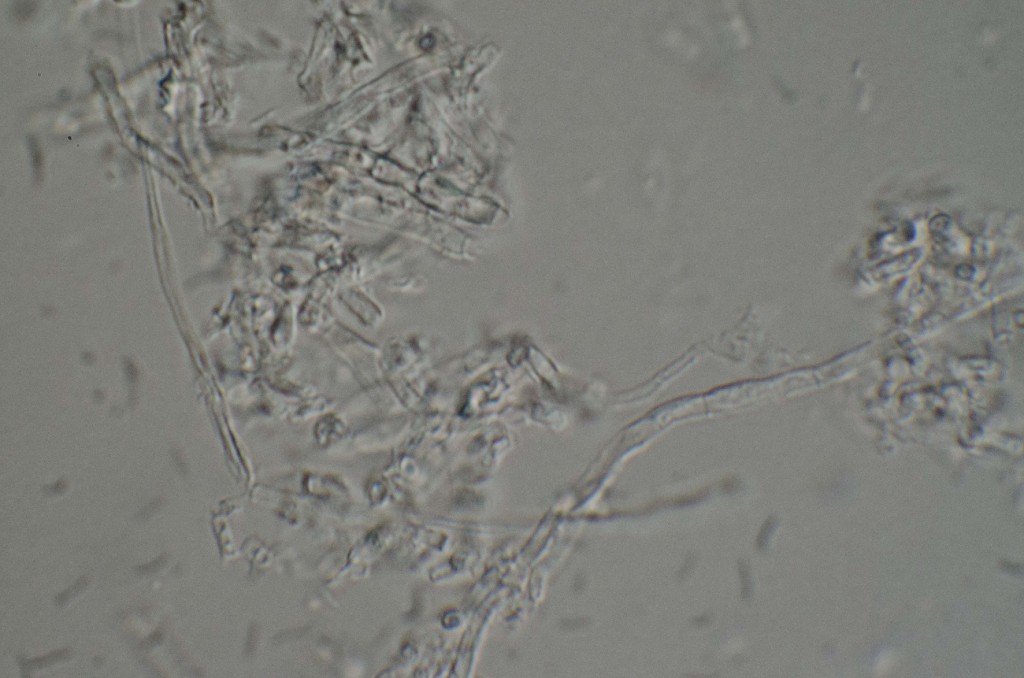Emerging Fungal Pathogens
Chalk Brood Disease
Ascosphaera apis is a fungal pathogen of honey bee larvae (genus Apis) and is responsible for chalkbrood disease. We are exploring non-invasive treatment methods that both reduces mortality and preserves the edibility of the honey.
The Honeybee Project at Georgia State University
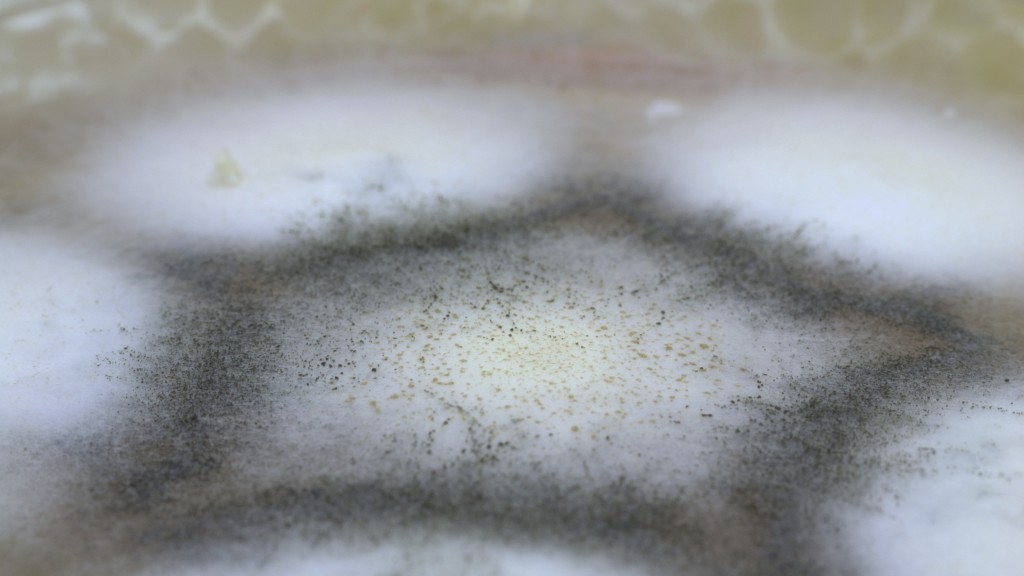
Opposing mating types of Ascosphaera apis growing on agar, producing spores at the meeting-point (© Kyle Gabriel, Georgia State
University)
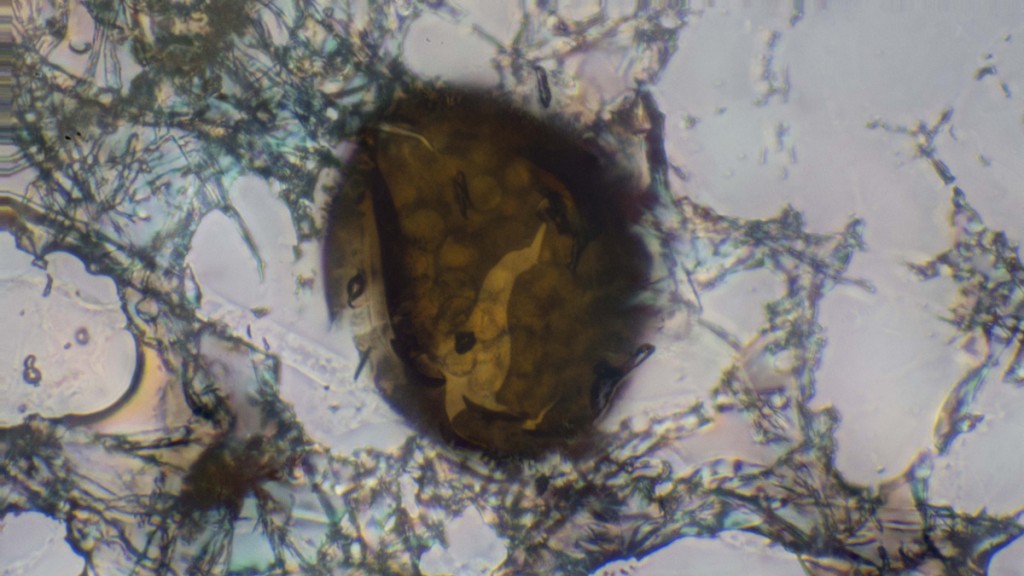
Ascosphaera apis conidia and mycelia (© John Neville, Georgia State University)
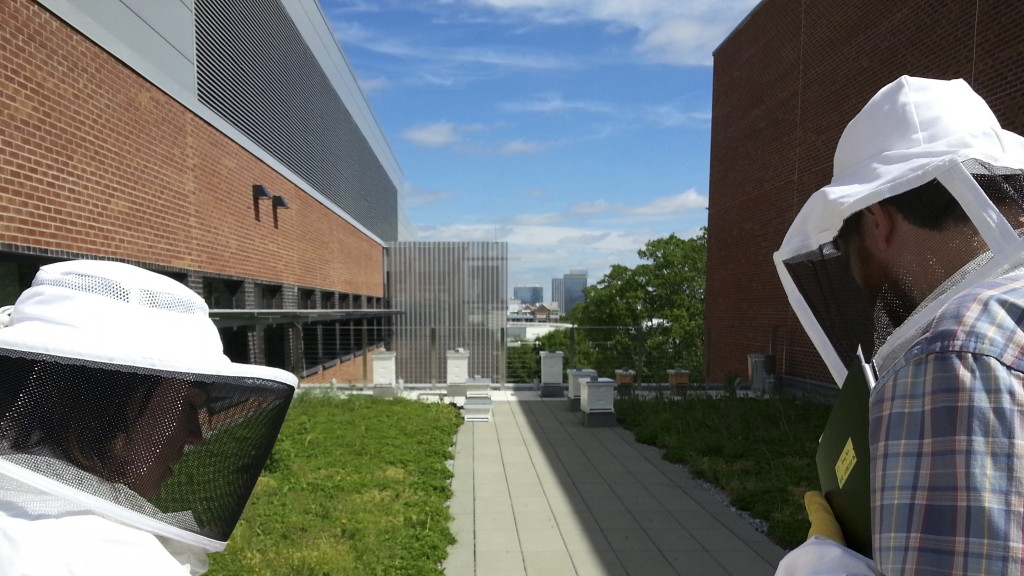
Multiple-hive apiary at Georgia Institute of Technology (© Kyle Gabriel, Georgia State
University)
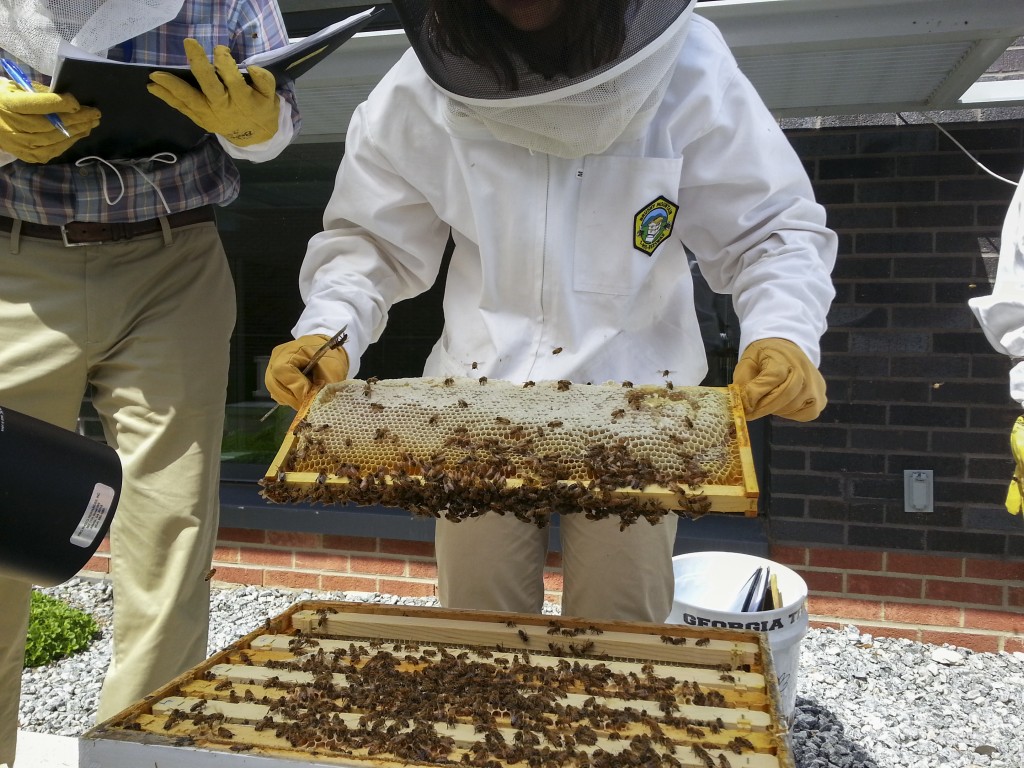
Bees and honey used for research (© Kyle Gabriel, Georgia State University)
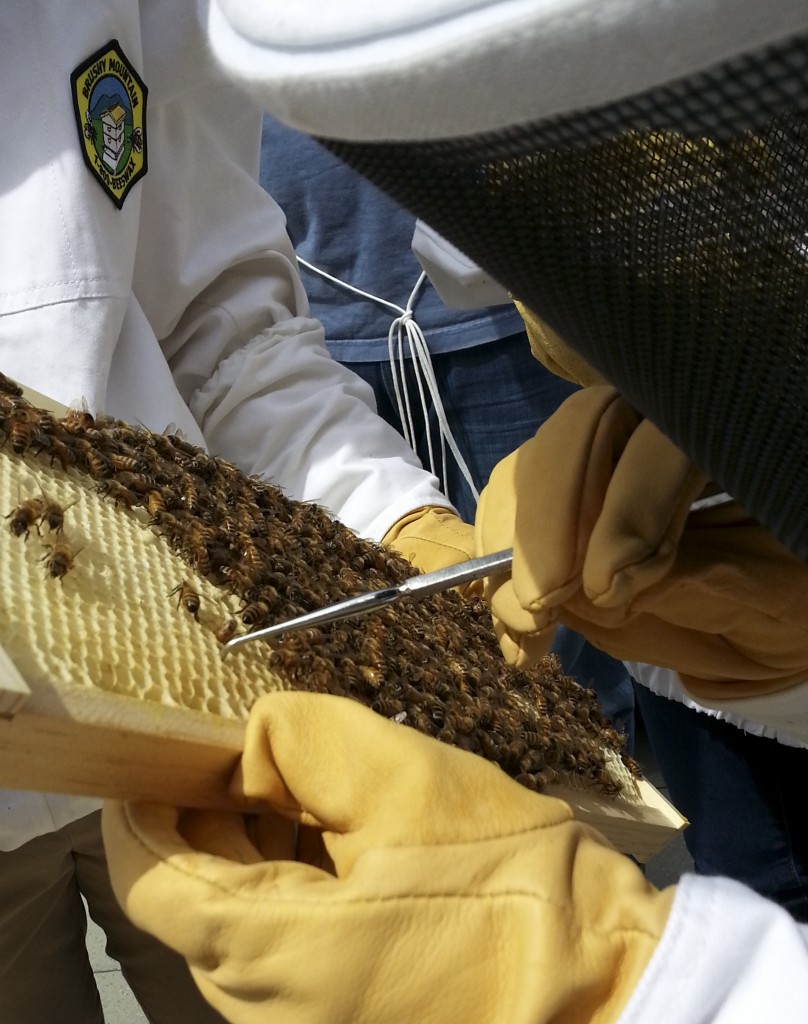
Larvae is collected for studying infection and treatment methods (© Kyle Gabriel,
Georgia State University)
Snake Fungal Disease
Snake fungal disease (SFD) is a dermatitis of snakes caused by Ophidiomyces ophiodiicola, which commonly results in high mortality. Recent increases in incidence in the Midwest and Eastern United States has prompted research efforts to investigate how it spreads, the mechanism of infection, and methods to treat the disease. We are currently collaborating with Zoo Atlanta to develop ways to detect the pathogen as well as potential treatment methods.
We’ve also begun a limited treatment trial of SFD with massasauga rattlesnakes, lead by Matt Allender at the Prairie Research Institute. We’ll release more information as it becomes available.







